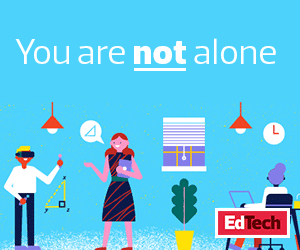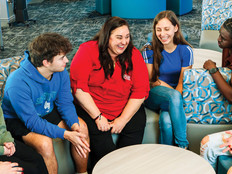Assistive Technology Eases Remote Learning Struggles
In recent years, research has shown that assistive technology can improve reading and spelling skills, among others, for students, helping them reach their full potential. Assistive technology can help increase children’s self-reliance and sense of independence by giving them more of a voice — and choice — in their learning.
Today, students have access to traditional supportive technologies such as abbreviation expanders, alternative keyboards, audiobooks, graphic organizers, optical character recognition, portable word processors and variable-speed tape recorders. However, new developments in artificial intelligence and machine learning are also entering the K–12 space at an accelerated speed and have the potential to significantly enhance personalized learning.
The ongoing evolution of AI-driven breakthroughs has enabled the development of artificial vision technologies, which are particularly useful for assisting students with dyslexia and other related conditions. Scrambled letters, blurred words, moving text and letter reversals require intense concentration from such students, especially as longer texts become more common as education progresses. In particular, students with dyslexia may find themselves fatigued and nauseous on a regular basis as a result of this required effort. Until recently, the only tools developed specifically for reading and comprehension difficulties were found on computers, which can compromise mobility.
Recent Innovations Improve Assistive Technology
To make assistive technology truly accessible to those with reading and comprehension challenges, products need to be designed with the user in mind. Assistive technology should also meet the needs of all students today, spanning primary and secondary education and beyond, to support independent learning, comprehension and communication.
Thankfully, recent advancements are making these objectives a reality. For example, product developers are now innovating discreet wearable and handheld devices that inconspicuously read content in printed material or on digital screens. For the first time, texts in books and on computers and smartphones are accessible to those with language processing difficulties.
What’s more, these innovative technologies are constantly evolving to become “smarter,” incorporating natural language understanding technology. Some advances are even available today, including voice-activated features that allow users to quickly retrieve and identify specific information they need from a text.
This extraordinary year has placed a new focus on accessibility. As educators continue to teach in virtual classrooms, accessible learning for students with dyslexia and other related conditions must be a priority. With the latest innovations in hand, we can continue to identify and address remote learning challenges — and provide students who have learning disabilities the best chance at success, now and in the future.










